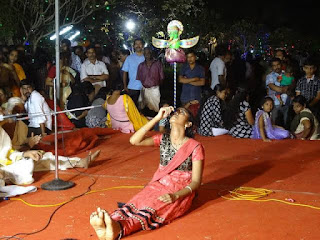Yellamma Devi Jatra

Yellara Amma Yellamma Goddess Yellamma is renowned for her prodigious power in southern India. She also goes by the names Renuka, Jogamma, Holiyyamma, Ekvira, and Ellai Amman in the public eye. Her temples are situated in the Karnataka State districts of Soudathi in the Belgaum District, Chandraguthi in the Shimoga District, and Hulgi in the Bellary District. There are well-known temples devoted to Yellamma in nearby states including Maharashtra, Andhra Pradesh, Himachal Pradesh, Tamil Nadu, and Telangana. Shakthi Peethas include Mahur in Maharashtra and Soudatti in Karnataka. The Mahabharata, Harivamsa, and Bhagavata Purana all feature legends about Renuka. The Legend Story King Renu, Renuka's father, staged a Yagna. a fire ceremony carried out to preserve tranquility and health in his realm. The celestial Gods were pleased with his devotion and gave him a daughter from the yagna's fire as a gift. She was given the name Renuka because she was king Renu's daughter. When sh...





